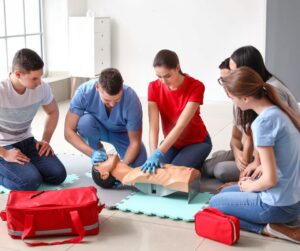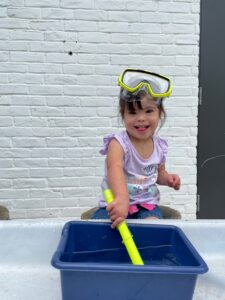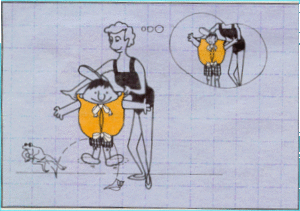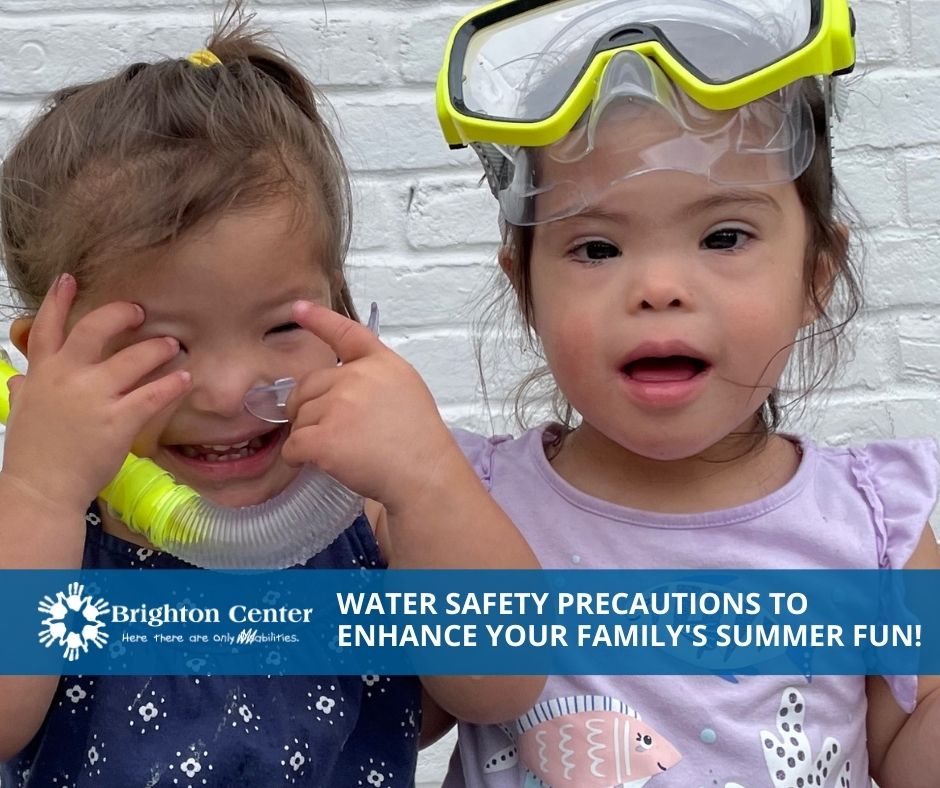Sometimes it’s hard to remember that oceans, lakes, waters, rivers, and pools were made for FUN and have enormous health and wellness benefits for your family. We all know that being in and near water is dangerous for everyone, and water safety precautions must be used.
Pool Safely collaborators explained during a National Drowning Prevention Alliance webinar that children with any disability often display a combination of behaviors, including wandering, impulsivity, and either a love of water or extreme fear of water, that increases their risk of drowning.
Make water time this season’s together time with family and friends. There’s safety in numbers. Create a water playgroup tribe that includes adults and friends that will prioritize making water fun and safe for everyone.
The Pool Safely campaign strives to keep all children safer in and around the water by urging everyone to practice simple water safety steps. Taking these practical steps to prevent child drownings is important for all families, especially those with a child who faces a heightened risk – such as a child with special needs.
Parents of children with special needs should talk to their child’s doctor about drowning prevention to develop an appropriate action plan tailored to their child.
 Learn CPR + First Aid with Family and Friends
Learn CPR + First Aid with Family and Friends
In the event of a water emergency, you and your friends and family’s ability to intervene and provide CPR and/or First Aid may reduce the severity of the injury and improve the chance of survival.
Your tribe can make a difference by simply being trained in CPR + First Aid. Plus who doesn’t have a good time learning CPR + First Aid, experiencing CPR dummies, and laughing with friends?
The American Red Cross offers expert training in baby, child, and adult first aid and CPR classes in and around San Antonio.
 Introduce your Children to Water Safety Precautions through Fun in the Tub or Yard
Introduce your Children to Water Safety Precautions through Fun in the Tub or Yard
Teaching your child water safety precautions can begin by having fun in not only your home bathtub but also your own backyard. Turning on a sprinkler or fishing with a shallow pan of water is a great place to explore all the fun you can have in the water. Introducing them to different types of equipment such as goggles, fins, and snorkel gear can be a cool discovery that engages little minds as they assess how and when to wear them.
This type of play allows you to begin the conversation about rules and set the expectations for behavior around any body of water. Encourage older children and adults that your child admires to set an example by observing these rules, as well.
Incorporating layers of protection around your home and backyard – including fences, pool covers and door alarms – are essential in keeping all children safer around ponds, pools, and spas. These barriers can help to delay and prevent children from accessing the water unsupervised. Specifically, pool fencing should follow these requirements:
- Fencing around all four sides of the pool
- Fencing should separate the pool area and play area of the yard.
- Fencing should be at least 48 inches high.
- Spacing between fence slats should be no more than 4 inches, or if chain link fence, diamonds no larger than 1 ¾ inches.
- A fence with a self-closing and self-latching gate that opens away from the pool.
Tackling the Swim
Formal swimming lessons are suitable (and fun!) for children with special needs. You may be able to find programs that are specifically designed for children with special needs. Furthermore, your local organizations may be able to make helpful recommendations. But, if this arrangement is not available, an experienced swim instructor who displays patience and interest in learning about the needs of your child is also acceptable.
Swimming lessons offer added benefits to children with special needs. For instance, these benefits include enhancing functional skills, improving strength, coordination, and body awareness, and building confidence.
Here are a few Local Organizations Brighton Center refers parents to that provide swim lessons for children with special needs:
Use Coast Guard-Approved Personal Flotation Devices (PFD)
Flotation devices and adaptive swim aids are important water safety precautions and can help position a child learning to swim. It should provide support and stability without restricting movement or limiting independence. Your swim instructor may be able to assist with choosing or fitting a device that meets your child’s needs. A flotation device may make your child feel more confident but remember that it should never provide you with a false sense of security or take the place of direct supervision.
 Teach your children to properly wear a PFD
Teach your children to properly wear a PFD
Children panic when they fall into the water suddenly. This causes them to move their arms and legs violently, making it hard to float safely in a PFD. A PFD will keep a child afloat, but may not keep a struggling child face-up. That’s why it’s so important to teach children how to put on a PFD and to help them get familiar with wearing one in the water.
To work correctly as a water safety precaution device, a PFD must fit snugly on a child. To check for a good fit, pick the child up by the shoulders of the PFD. If the PFD fits right, the child’s chin and ears will not slip through.
PFDs are not babysitters. Even though a child wears a PFD when on or near the water, an adult should always be there, too. Parents should remember that inflatable toys and rafts should not be used in place of PFDs.
An Important Message Regarding Personal Flotation Devices (PFDs)
Since infants and children come in many sizes and shapes, the U.S. Coast Guard and personal flotation device (PFD) manufacturers urge parents to test PFDs immediately after purchase. You should test your PFD in a swimming pool. Test it with the infant or child who will be wearing the PFD. Just because it works for one infant or child does not mean it will similarly work for another.
Check for proper weight range, comfortable fit, and especially a stable face-up position in water. Infants and children are difficult to float in a face-up position. This is because of the distribution of body weight and the tendency for them to struggle or attempt to climb out of the water. Some infants and children float best in one style of vest, while others will float better in another. If one does not work well, try another style. Remember: Never leave an infant or child unattended on a dock, on a boat or in-the-water, even if they have a PFD on.
No Child Left Unsupervised
With young children, you should practice “touch supervision.” This means, regardless of other safeguards, you should be in the water with your child, never further than arms-length away. You should never rely on flotation devices as a substitute for your direct supervision.
For children at other ages, a designated adult should be actively watching the children under their care. Efforts should be taken to avoid distractions, including reading a book, looking at a smartphone, or socializing. The best water safety precaution can be an attentive designated adult watching children at all times.
Remember, have fun, and use these precious moments to bond with your child, family and friends.















